Also known as walking poles, hiking sticks, and trekking poles, best hiking poles are hard to find, but once you do, these are a popular hiking accessory used to provide walkers with steadiness on rough terrain and to aid with their rhythm.
Hikers also use this accessory for the same reason. Terrain that is less certain calls for these accessories as well as slopes that are steep.
How to choose?
Once you know what it’s for and the support it can provide, you may even want to refer to it as a survival hiking stick, as it can certainly help you with that. When it comes to choosing the one that’s right for you, this could be a difficult decision unless you know how to choose of course.
If you’re really choosy, then the massive range out there will always increase your choosiness making it more difficult to decide. Or you can make one yourself.
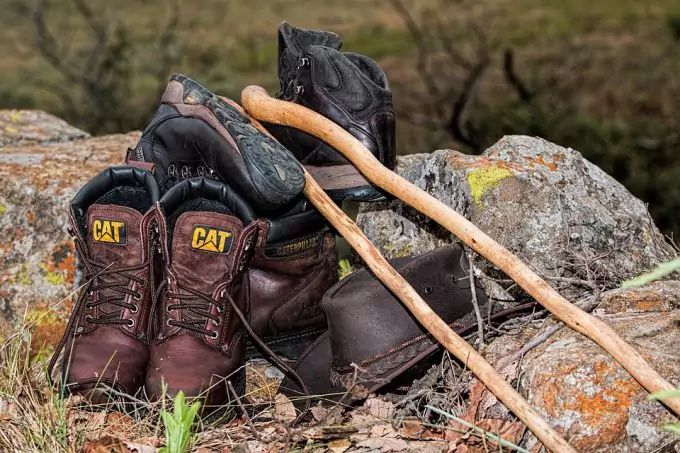
However, if you understand your needs and the reason you want to use the hiking poles for, this makes everything a lot easier. Here are a couple of questions you may want to answer before making the final decision:
- Are you getting them for some serious mountaineering?
- Are you after poles for a casual hike?
- Are you planning to trek during the winter season with the poles?
Once you have the answer, you can proceed and pick from the ones that best suit and fit into the category you have chosen. If you wish to use your hiking poles for mountaineering, then you will need some with very specific features.
The best feature for a hiking pole used for mountaineering is its shock-absorption. The surface you come across whilst mountaineering can be pretty solid, which is why your poles need to have a good anti-shock system. Unless you want to pound with each step, of course!
The poles for mountaineering are suitable for extreme day hikes that take the hiker through snowbanks; where hiking poles are necessary. Another feature you will want to look for is the ultra-weight material, adjustable height, and a brilliant grip.
The basket is not a big issue when obtaining a hiking pole for the purpose of mountaineering. The best poles for mountaineering purposes include any of the following:
- Leki Thermolite XL Aergon Antishock trekking poles for men
- Leki Cressida Antishock trekking poles for women
- Black Diamond Trail Shock trekking poles for men
- Leki Carbon trekking poles for women
If you are after a casual hike, you will want to go for the poles that have incredibly less features. These poles do not need the intense telescoping abilities or duty baskets or anti-shock systems. Why? You may be wondering. Well, the answer is really simple!
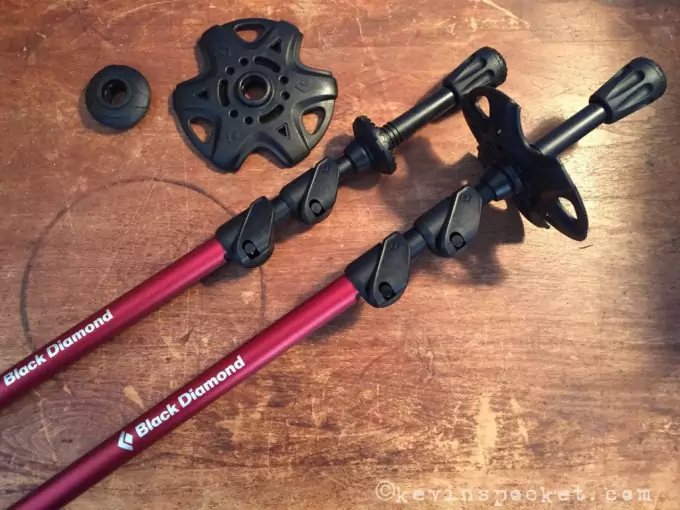
If you’re going for a casual hike across some incredibly easy terrain, you will not need all those extra features, so why spend so much money? When it comes to the best hiking poles for a casual hike, these will be ones with a brilliant grip, decent points, and those that are lightweight.
The best poles for the purpose of a casual hike will be any of the following:
- Black Diamond Distance FL trekking pole (Blue Ridge, 120 – 140cm)
- Black Diamond Alpine Carbon Cork trekking poles for women
- Black Diamond Distance FL Z-Pole trekking poles for men
- Leki Khumbu Aergon Speed Lock trekking poles for women
Finally, if you’re after a hiking pole for the winter, then one thing they really do not need to have is the shock-absorption. However, best models will always have this and it is not harmful as the need may just arise when you’re on crusty snow or ice.
The most important feature of such poles is their interchangeable baskets. An important feature in a snow trekking pole is its basket as well as its lightweight feature.
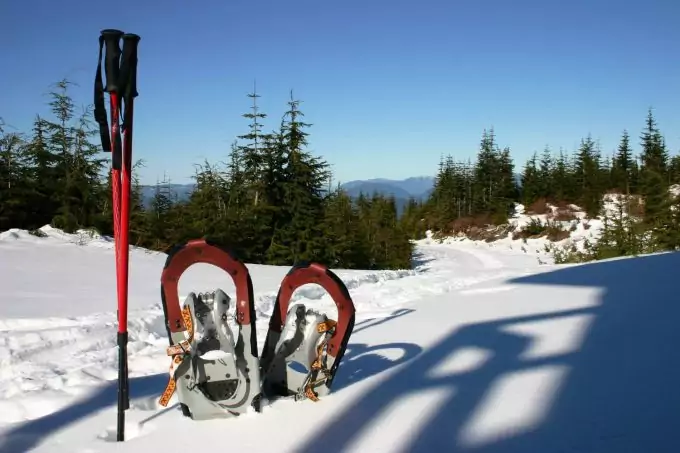
The best poles for hiking in the winter are listed below:
- REI Traverse PowerLock trekking poles for men
- Komperdell Hiker Power Lock trekking poles for women
- Komperdell Hiker men’s trekking poles
- REI Traverse PowerLock trekking poles for women
Advantages and disadvantages of hiking poles
Just like all things, there are also some benefits as well as drawbacks associated with hiking poles. Read on and discover what these are! If you are confused on where to go with hiking poles, the best area to start is usually discussing the different ways the poles can benefit you. A type of walking that is carried out with these poles is known as Nordic walking.
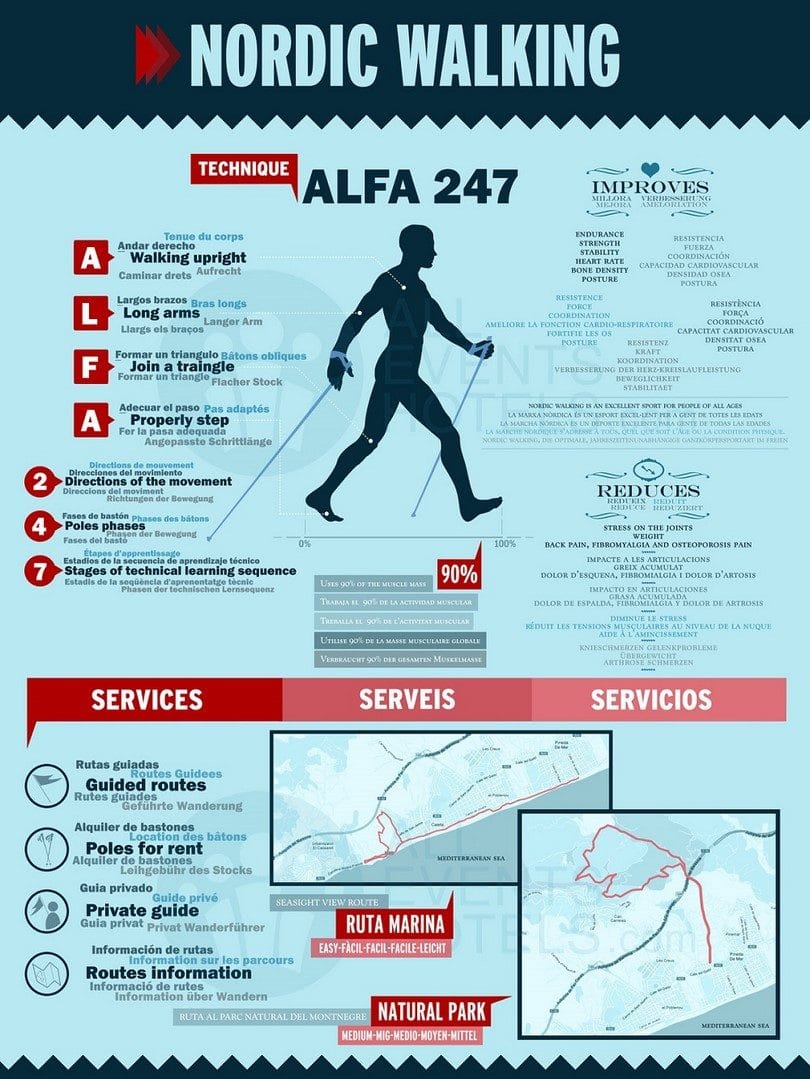
This has been found to have very beneficial effects on:
- Blood pressure
- Resting heart rate
- Exercise capacity
- Quality of life
- Maximal oxygen consumption.
Strength and fitness wise these poles are brilliant as they offer improved stability, fitness, and balance. Evidence also suggests hiking poles enhance the aerobic benefits of hiking as well as the creation of muscles. Whilst carrying out the hiking activity, a hiker usually uses upper body muscles that are not used on a usual basis. These include:
- Triceps
- Pectorals
- Side muscles – latissimus dorsi
- Biceps
If one engages these muscles on a regular basis and swings at the same time will help strengthen these. As well as assisting to build upper body muscles, if one engages these muscles via hiking, this is also equivalent to a full body workout.
Hiking poles can also raise the amount of calories that are burned whilst hiking. Many studies have shown using the Nordic walking pole, which is somewhat similar to a hiking pole can increase the total calories burned by twenty percent. This is brilliant for those hikers who carry out the activity for fitness purposes.
However, those who hike long distance need to be aware that they will actually be travelling with an extra twenty percent calories, which will need to be carried. Many hikers see the activity as more of a fitness thing than just the workout side of it.
Those who use hiking poles specifically for hiking purposes are assisted with balance and stability. Many specialists state hiking poles improve stability, posture, and balance. Hiking poles provide one with an extra two points of contact with the track.
Essentially, this converts a bipedal hiker into one with four legs – hence, the hiking poles. This gives hikers more points of contact, which reduces the risk of the hiker slipping and falling.
If you think about what leads to slips and falls on trails, you will find this happens whenever you intend to climb and one foot is usually the one with the balance of more weight, which slips on a wet surface or a patch of mud. This is very likely without a pair of hiking poles.
However, with hiking poles you can always brace yourself and stay up on your feet all throughout the hike.
Hikers usually face a range of different obstacles such as river and stream crossings, improving balance with heavy load, and traverse slippery rocks and logs. Hiking poles can help with all these as well as provide the hiker with the steady rhythm they require whilst hiking.
As well as preventing falls and injuries, hiking poles are also said to prevent damage and pain that is related to continuous stress injuries. Even if you are hiking without a heavy backpack the entire day, this places major stress on the hips, knees, and ankles, but with a pair of hiking poles, less stress is placed on the joints as it is equally shared amongst the two poles and two legs.
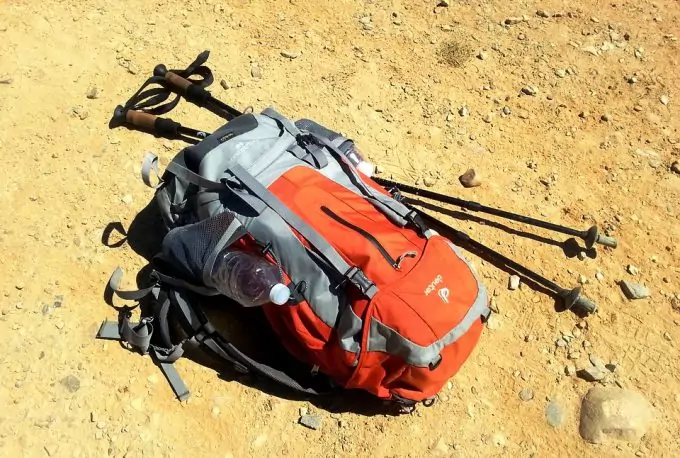
Hiking poles aid with transferring the weight and decrease the strain that would usually be absorbed by the muscles and joints of the lower body. If one hikes with hiking poles, then less stress is put on the body, which means one can happily enjoy their hiking experience without suffering or worrying about any pain.
Depending on whether you wish to hike with one pole or two, this is all down to you. Just like some people prefer hiking with two poles, there are others who just wish to hike with the aid of one. Those who are out for a short hike tend to use only one hiking pole and choose to keep the other hand free.
However, it is always a good idea to engage both arms with a pole in each hand in order to take the load of the knees. This is also much more effective. The majority of experts agree on the fact that the stability and balance benefits that are provided with two poles are always better than one.
The majority of hikers find they discover continuous benefits of hiking poles as these tend to become more obvious each time. Just to summarize, there are many benefits hiking poles can provide, such as the following list:
- The strain on the knee is decreased – especially when one hikes downhill
- The poles function as a pair of extra legs on terrain that is uneven in order to stop injuries
- One is less likely to lose their balance, which reduces sprains and stress fractures with hiking poles
- Each pole plant allows the user to remove three to five percent of the effect from each step
- Using a hiking poles improves ones posture whilst hiking or walking
- Carrying a backpack or a daypack on the back is when this becomes more significant
- If you have a better upright posture, more air will get into your lungs, which maximizes breathing
Disadvantages of hiking poles
Hiking poles do have a lot of benefits, but they also have many drawbacks, which are usually related to the trail and the hiker.
Many hikers complain about the fact the pole leaves visible impact on the tracks they are using them on.
For example, the poles may poke holes that are visible into the ground, which damages the vegetation. Another complaint is regarding the carbide tips, which are stated to leave white scratches on the rock as well as making scraping sounds. Poles do trash trails and cause damage to the rocks, soil, and vegetation. They can also increase erosion and quicken the tendency of the track to wash out.
Many individuals’ debate hiking poles ruin the environment as well as the terrain. However, some hikers do agree with this, but also state this can be overcome, as the activity itself is a passion for hikers, which outweighs such drawbacks.
Many researchers and specialists have found ways hikers can minimize the impact their poles cause and have suggested the following tips listed below:
- Using rubber pole tips to stop the rock from scratching
- Placing the poles on the surface of the trails rather than placing them on vegetation or off trail
- Using pole baskets in order to reduce the sink age
- Don’t use hiking poles in areas that are ecologically sensitive
If hiking poles are used effectively and in a proper manner, the improved agility and balance they offer can help hikers to stay on the correct durable surface and trail. This also helps hikers to stay off the vegetation that is fragile, which minimizes impact and erosion.
Another drawback is related to the cost of hiking poles. They are very expensive once you begin your search for one. You need to ensure you pick wisely and make the decision with all considerations in mind.
This may include how you wish to use them, how often you will be using them, and the season and terrain you will be using them during and on. A simple and plain truth related to hiking poles is that they raise the overall work you need to put into the activity by increasing the overall amount of energy you use.
You actually end up doing far more work whilst using them than you would without them. The work you put into this is very beneficial for your health, but can shorten incredibly the overall distance you hike during the day.
The technique behind using hiking poles can take some time, as they are not as easy to use as they look. Proper instruction and time is needed in order to one to learn how to use hiking poles in an effective manner and with the correct technique.
Many people think they know how they are to be used unless, of course they are told to use one. Many individuals do not understand that using these in a proper manner requires right techniques, as that is when one will be gaining the most benefits from them.
See also: How to Use Walking Poles: Detailed Techniques Explained Plus A Few Tips
Using hiking poles in a wrong manner or with no technique at all can be damaging to the person that beneficial. The energy you will be using will not get you anywhere especially if it is not benefiting you in any way. Other drawbacks related to hiking poles include
- Learning curve
- Scrambling
- Air travel
The bottom line
Whether you wish to hike with hiking poles or not is a personal decision. However, it is also good to know the facts so you are aware of whether they will be beneficial for you or a waste of time.
If you weight the advantage against the drawbacks, you will find they are very beneficial, but also have a negative side. If you think you can manage and put up with the disadvantages, then a pair of hiking poles is always a good investment.
When considering which hiking pole is best for you, this is another decision you will need to make personally. However, if you answer the questions listed at the top of this article, then that will make it easier for you to choose the best hiking pole that will suit and meet your needs in the best manner.
Alternatively, there are many considerations you also need to take into account in order for you to be hiking with the best hiking pole.
For more tips on how to choose the best hiking gear, see our article on this important topic.






The Leki Thermolite XL Aergon Antishock trekking poles are genuinely decent trekking poles. When I got mine, one of the little plastic handles broke during shipping so naturally adjusting tension was impossible. I reached Leki client support, and they sent me a substitution one right out. They worked proficiently and impressively. The shafts are rock hard, and I am less worried about one shattering that one of the carbon fiber posts which are light however can be weak, especially on the off chance that you are utilizing your trekking poles to bolster your tent.
All the trekking poles I see on best-buy seem to be a bit pricey for..well, a best-buy budget option. Do you think it is reasonable to find an affordable pole that could serve the purpose? Or is choosing a budget option an unwise choice when it comes to trekking poles?
I am a fan of hiking but never used a pole. If I need one I usually just pick up a suitable branch from the forest. Are poles really worth paying extra for?
They definitely are worth paying extra for.